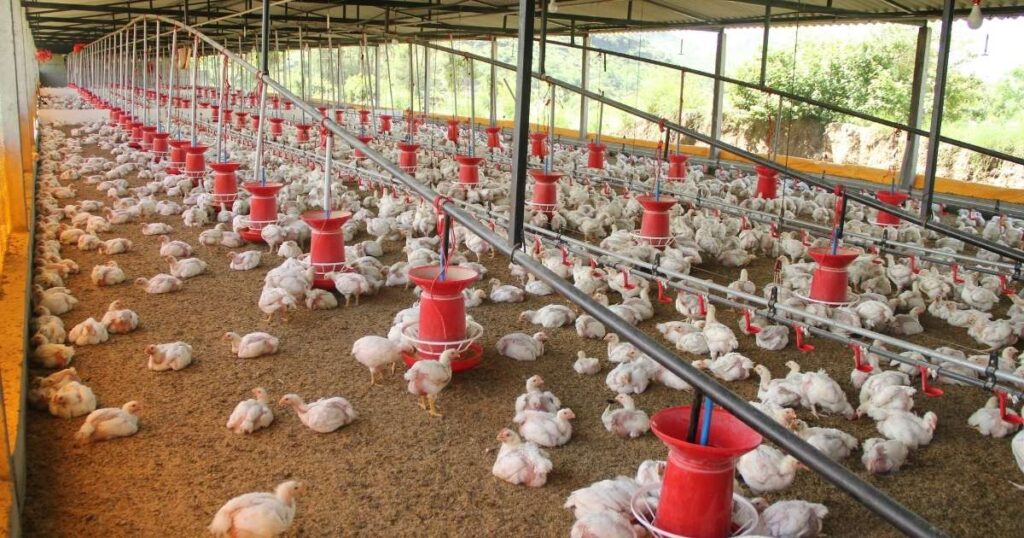
From Poop to Power: How Poultry Waste Is Turned into Energy
Every year, the global poultry sector produces hundreds of millions of tons of manure, litter, and processing residues.
Left unmanaged, that material is an environmental headache. It’s a source of methane (a potent greenhouse gas), ammonia, and nutrient runoff that fuels algal blooms in rivers and coastal waters.
But over the last decade, engineers, farmers, and entrepreneurs have turned the problem into an opportunity: Turning chicken litter into energy captures methane, produces heat or biomethane, and leaves ash that (with processing) can be returned to fields as a safer, concentrated fertilizer.
“When you turn manure into methane or electricity, the planet wins twice: you stop a potent greenhouse gas, and you replace fossil energy.”
Two paths to power: biological and thermal
Broadly, poultry waste becomes energy through two families of technologies: anaerobic digestion (a biological, low-temperature route that makes biogas) and thermal routes (high-temperature processes that turn dry manure into steam, syngas or biochar, and ash).
Anaerobic digestion (AD)
AD places organic material in sealed tanks where microbes, in the absence of oxygen, produce methane-rich biogas. That gas can run engines for electricity and heat or be upgraded into biomethane (renewable natural gas).
The leftover digestate contains plant nutrients and can be used as fertilizer.
Thermal routes (combustion, gasification, pyrolysis)
These processes work at high temperatures.
- Dried litter can be combusted for steam and electricity.
- Gasification converts it into a synthesis gas (CO + H₂) usable in engines or chemical synthesis.
- Pyrolysis yields biochar plus gas and oils.
Case studies from around the world
Netherlands — Gigawatts of manure-to-methane at scale
The Netherlands is a global showcase. Two complementary examples illustrate different technical routes:
Wijster (Green Create): One of Europe’s largest manure-fed biomethane plants was built to digest mainly poultry manure. The plant treats on the order of 136,500 tons of poultry manure annually and upgrades the biogas to biomethane (reported outputs on the order of ~20 million normal m³ of biomethane per year).
The facility injects renewable gas into the Dutch grid and illustrates how clustered sourcing from dozens of farms can underpin a centralized, large-scale biomethane plant.
BMC Moerdijk: BMC operates a large thermal/processing complex that historically converts very large volumes of poultry manure into electricity and fertilizer ash.
The company has explored transitioning from electricity production to biomethane production and simultaneously runs phosphorus-recovery and ash valorization activities.
The operation has been cited as producing hundreds of GWh of renewable energy annually.
United Kingdom — Local AD plants, public debate
The UK has several poultry-feed AD projects and ongoing proposals.
Small and medium biogas plants have been a route to supply local heat and electricity. Recent planning approvals for poultry/livestock manure facilities show continued interest in using manure for renewables while also surfacing community concerns about siting and impacts.
United States — Farm-scale AD and untapped potential
The U.S. has hundreds of manure-based AD systems (AgSTAR reports ~400 manure AD systems as of mid-2024 across species), although relatively few accept poultry litter compared to dairy.
AgSTAR and biogas industry analyses repeatedly highlight large untapped potential: thousands of farms could host AD systems and produce renewable electricity if economics and policy align. Farm-level digesters and clustered systems are the dominant model in the U.S. market today.
India — Compressed biogas (CBG) and agricultural feedstocks
India has been actively promoting compressed biogas (biomethane) from agricultural residues and slurry as part of national CBG programs. Transforming manure (including poultry residues where viable) into CBG is part of India’s methane-mitigation and energy-security playbook.
Smallholder and developing-country examples — practical, local benefits
Across East Africa, Southeast Asia, and parts of Latin America, small biodigesters using chicken manure and other wastes help households and small farms generate cooking gas and fertilizer while improving sanitation and lowering fuel costs. These systems aren’t a substitute for industrial solutions in regions with concentrated poultry production, but they are important for livelihoods and local sustainability.
“The technology is the easy part — the real art is assembling farmers, arranging contracts, and finding buyers for both gas and fertilizer.”


